Schiller’s skull: Das Beinhaus
Oscar Enberg
The Shop, Sadie Coles HQ
1–23 September 2023
Following German poet Friedrich Schiller’s death in 1805, his corpse became the brunt of a century-long conspiracy. Buried in a mass grave, his skull was dug up by a Schiller enthusiast, who picked one at random based on its enormity. It subsequently passed to the hands of Schiller’s intimate friend, the writer Johann Wolfgang von Goethe. The skull was then the lead protagonist for his poem, ‘Lines on Seeing Schiller’s Skull’ in which he describes it as a ‘mysterious vessel’. A decade later, it was duly placed alongside Goethe’s remains in a vault tributing German Classicism.
Oscar Enberg’s fascination for this story sprung after recent examinations by anatomists and scientists alike, concluded that the skull wasn’t Schiller’s after all. Having lived in Berlin for nearly a decade, Oscar noticed that this mystifying account of German history serves as a metaphor for his approach to making sculptures by, in his words ‘perverting the canon of literature’ and challenging the received narrative. The enigma of Schiller’s skull reveals that society’s constant rewriting of the past augments how objects are remembered. Across Oscar’s work exhibited in iterations at The Shop, Sadie Coles HQ and Brunette Coleman, phenomena relating to German traditions, or which carry a certain symbolism, appear in varying repetitive forms. He coins the process ‘a material patois’, a sculptural dialect specific to a region. Complex methods of sculpting require attuned techniques to achieve such precision – the buttons, vases and woodwind instruments for example, are conceived by a master woodturner in Brandenburg, or the carved ‘Fasching’ masks historically worn in German folklore to frighten the demons of winter, require Oscar’s meticulous attention.
Often his delving through history encourages him to ruminate on how time is measured. To make sense of these disparate objects, he likens the process to a literary technique called a ‘Ring Composition’, a way of uniting key moments by way of symmetry that, in his words ‘adopts a sort of mean- dering narrative’. This is played out through visual clues referencing the cyclical changing of seasons; as harvest costumes, root vegetables, autumnal leaves or snowmen appear in varying forms. Nature also provides him with remnants of a life once lived, conceiving delicately painted orchids made from leftover bones found in former East Germany, or a tree log gnawed by beavers from a Brandenburg estuary. The relics are either left as they are or dealt certain sleights of hand, with trompe-l’œil painting techniques feigning patina. Oscar’s system for making objects requires this acute dexterity for material, but he contends that he’s ‘attempting to model a familiar but perhaps not completely intelligible language out of them.’
Across both galleries, Oscar tests the limits of our perception of what he deems as ‘dishonest’ objects – a nod to the hopeful gravedigger who first mistook Schiller’s skull. Whether as an incongruously large glass lamp shaped like an onion (made by his wife, artist Nigin Beck), or a piece of ivory from a Mastodon tusk attached to a corkscrew, there’s a hidden rationale at play; a rewriting of a shared folklore in which objects command importance, but undeniably trick and deceive along the way.
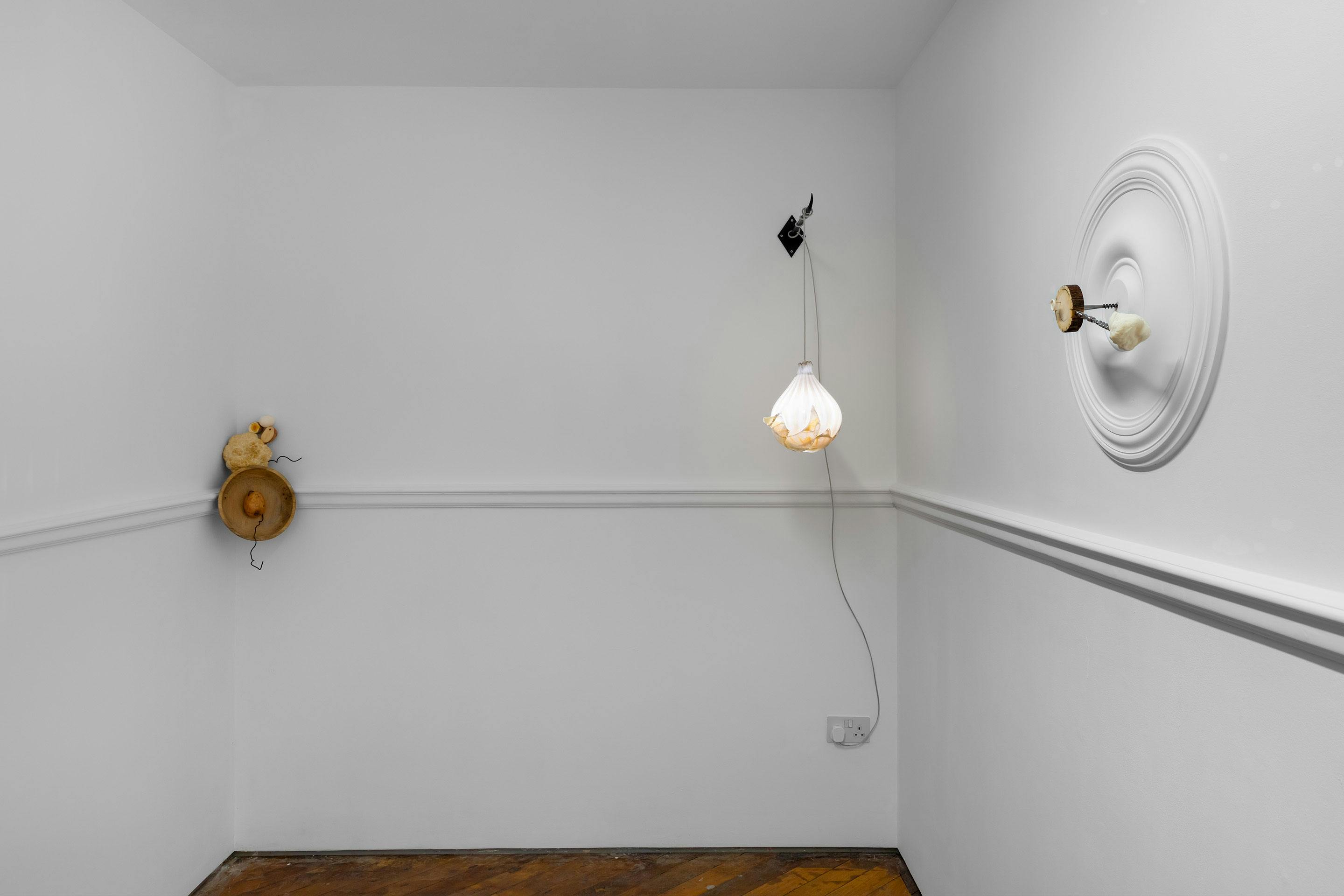
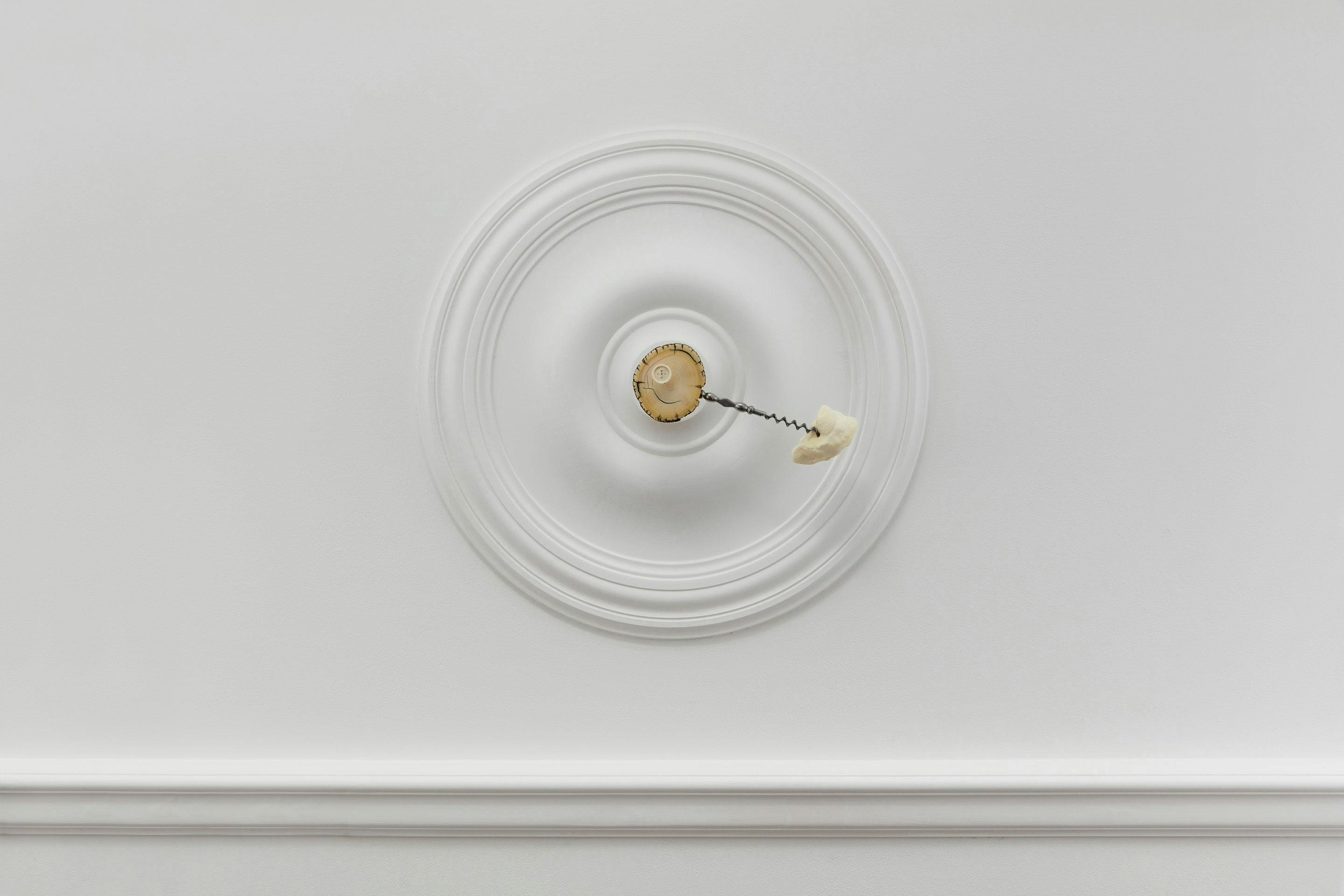
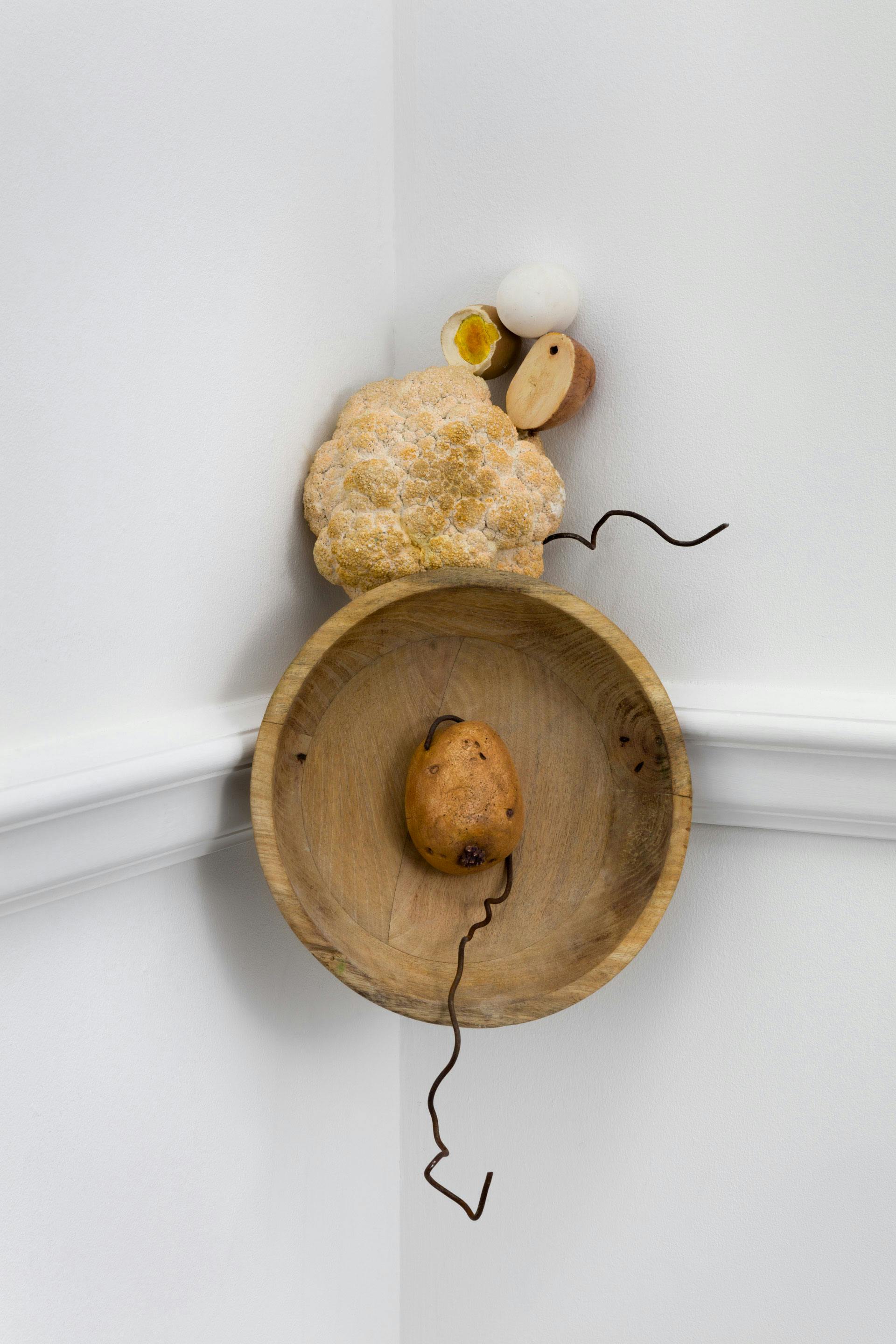
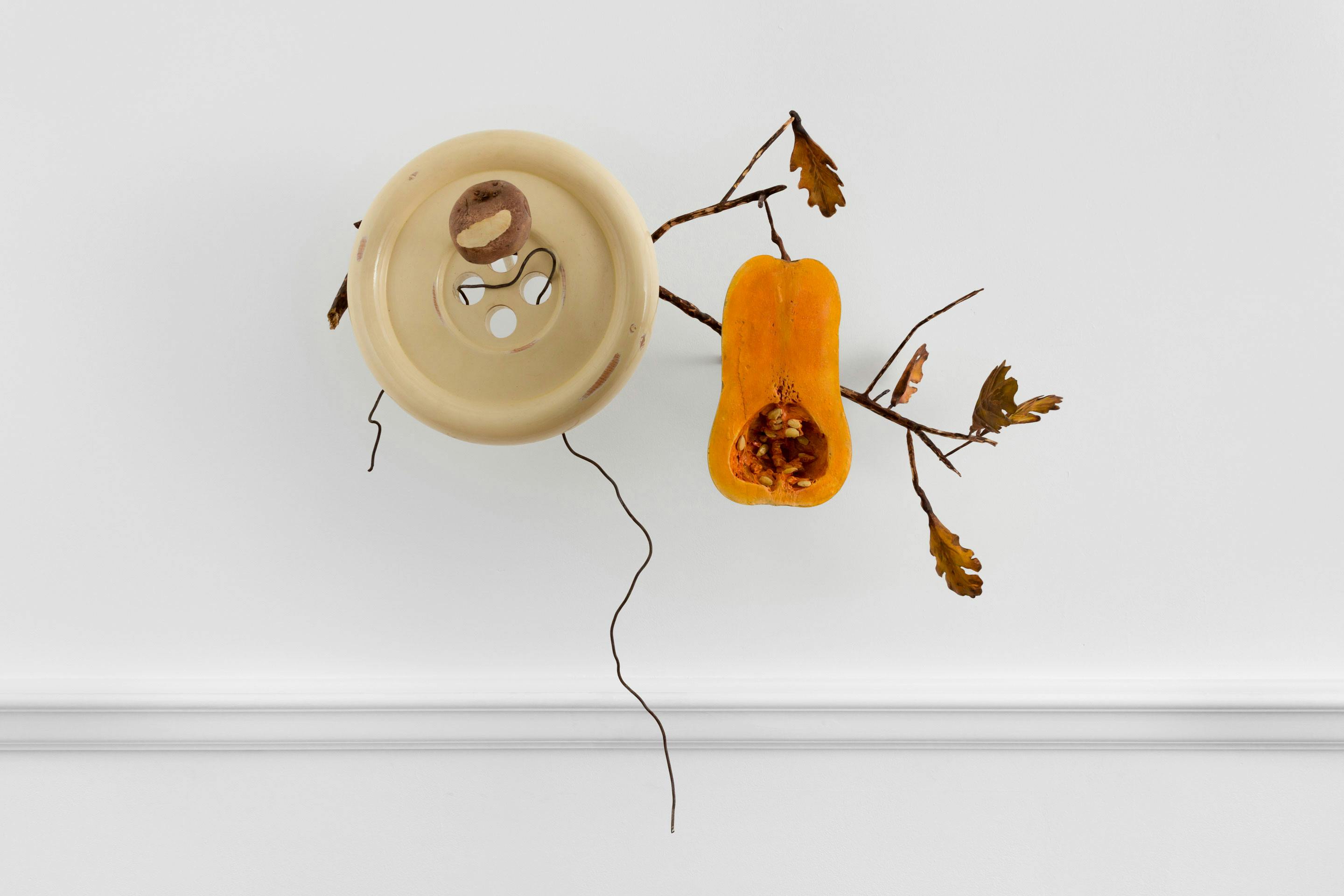
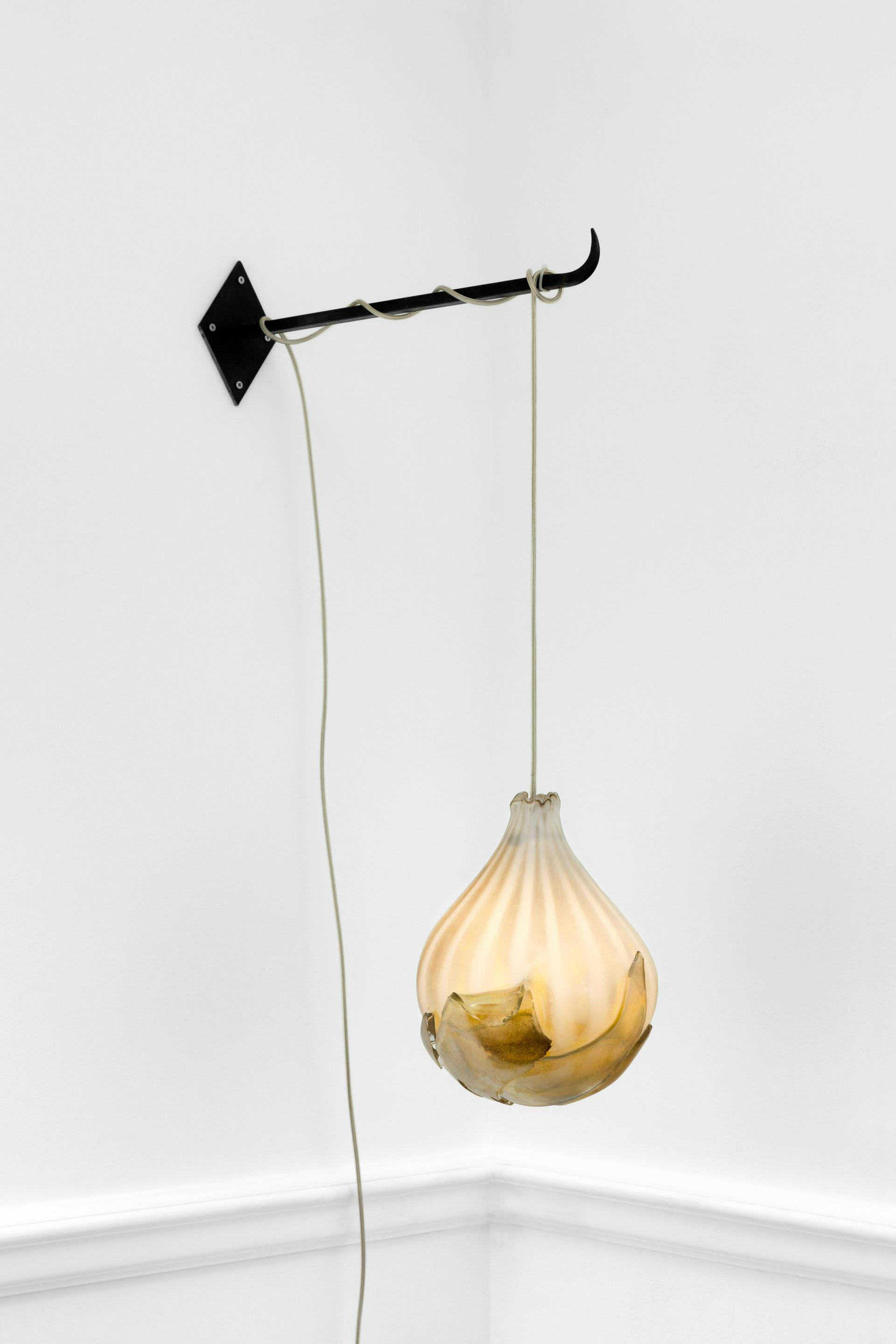
Oscar Enberg
b. 1988 Christchurch, New Zealand) lives and works in Berlin. In 2016–17 he was the Creative New Zealand Artist in Residence at the Kunstlerhaus Bethanien, Berlin and in 2017 a recipient of the prestigious Ars Viva Preis, awarded annually to artists living in Germany under the age of 35. His work has been featured in exhibitions at: Halle für Kunst Steiermark (Graz), S.M.A.K, (Ghent), Mackintosh Lane (London), Kunstverein München (Munich), Auckland Art Gallery (Auckland), Centre Pompidou (Paris).
Nigin Beck
(b. 1984 Munich, Germany) is an German Iranian artist living in Berlin. She studied Art History and Islamic Studies and graduated in 2012 as Meisterschülerin at the Akademie der Bildenden Künste, Munich. Recent exhibitions include; House of Dreamers, Villa Boghossian (Brussels), Mertzbau, Kinderhook Caracas (Berlin), Yeki Bud, Yeki Nabud Ashley (Berlin), Transformers, Mauer (Cologne).
Publications
Credits
Images courtesy of Brunette Coleman, London. Photography by Jack Elliot Edwards.
